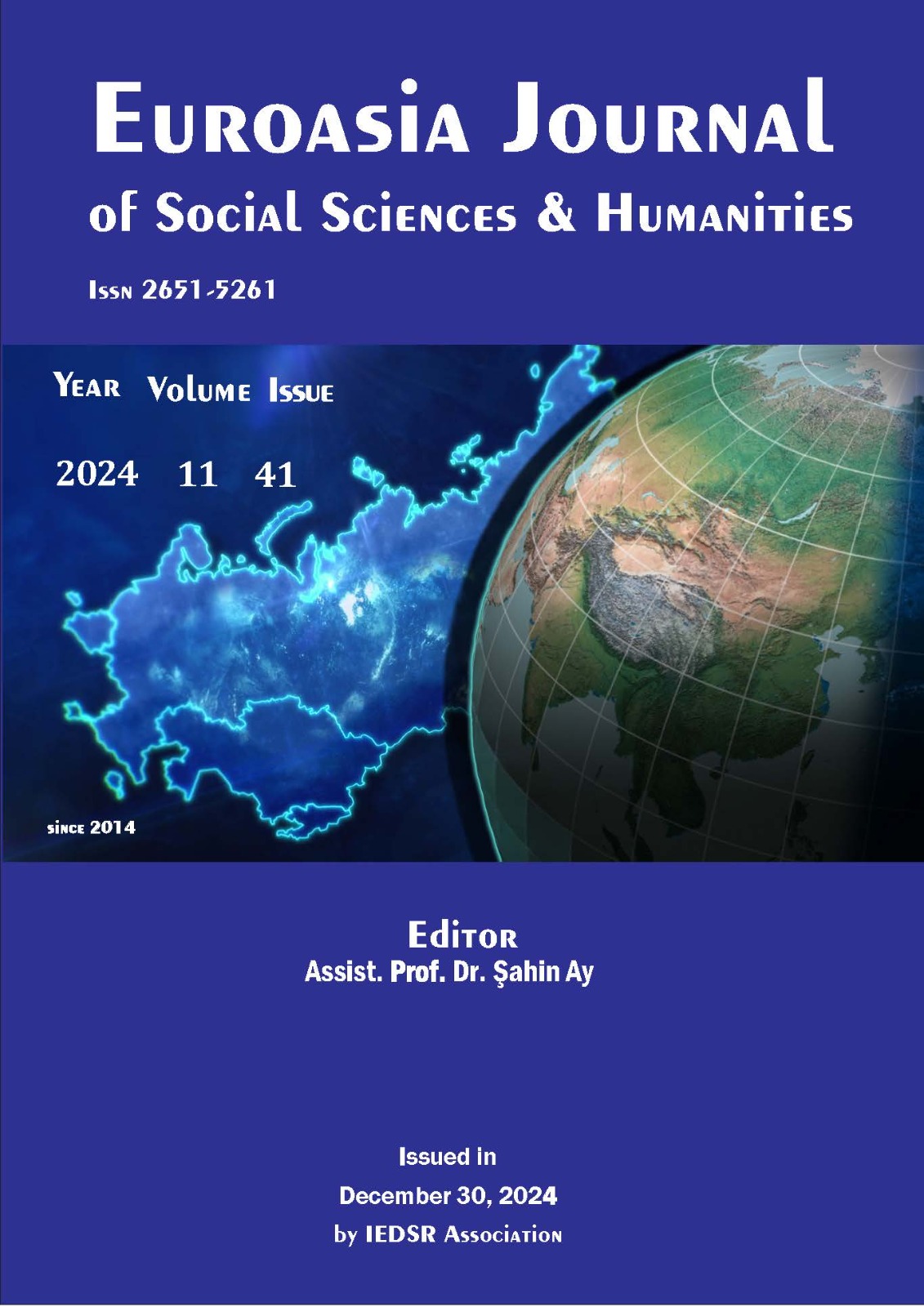A Historical Analysis of the Railway Transportation Economy in Turkey
DOI:
https://doi.org/10.5281/zenodo.14610901Keywords:
Economic Policy, Transportation Economics, Railway, TurkeyAbstract
The transportation of people, goods, and cargo from one place to another has been a significant endeavor throughout human history. The most important transportation system that marked the 19th century with the Industrial Revolution was the railway. The development of the capitalist economic system followed a parallel path with the development of railways. Large-scale investments were made in the construction of railways at great speed in Europe, particularly in England, and around the world. Railway investments in Turkey also first arrived during the Ottoman Empire period, mainly through European companies from England, France, and Germany. During this period, the railways built and operated by foreign companies with privileges granted to them were quickly nationalized during the Republic period, and the construction of railways relying on national capital under state control was deemed crucial for industrialization and economic development. Following World War II, the changing conditions led to different transportation policies in Turkey, with a focus on road construction while neglecting railways. Since the 2000s, investment in railways has once again become a topic of interest in Turkey. In this study, starting from the pre-Republic period, the historical development and economic dimension of the railway transportation system in Turkey are examined, and the state of railway transportation economic policy during various periods throughout the history of the Republic is presented.
Downloads
References
Akgüngör, A. P., Demirel, A. (2004): “Türkiyedeki Ulaştırma Sistemlerinin Analizi Ve Ulaştırma Politikaları” Pamukkale Üniversitesi Mühendislik Fakültesi Mühendislik Bilimleri Dergisi, 10(3): 423-430.
Akgüngör, S., Aldemir, C., Kuştepeli, Y., Gülcan, Y., Tecim, V. (2011): “The Effect of Railway Expansion on Population in Turkey, 1856-2000”, The Journal of Interdisciplinary History, 42(1): 135-157.
Avcı, M. (2014): “Atatürk Dönemi Demiryolu Politikası”, Ankara Üniversitesi Türk İnkılâp Tarihi Enstitüsü Atatürk Yolu Dergisi, S.54: 39-58.
Avşaroğlu, N. (2008): “Marshall Planı, Amerikan Dış Kredileri Ve Türkiye Madencilik Sektörüne Etkileri”, http://www.maden.org.tr/resimler/ekler/4cdde86a4560c17_ek.pdf?tipi=23&turu=X&sube=0, (accessed 5 November 2019).
Bonnett, C. F. (2005): Practical Railway Engineering, London, Imperial College Press.
Coşar, N., Demirci, S. (2009): “Incorporation into the World Economy: From Railways to Highways (1850-1950)”, Middle Eastern Studies, 45(1): 19-31.
D. L. (1915): “Railroads in Turkey”, Bulletin of the American Geographical Society, 47(12): 934-940.
DPT (2001): Sekizinci Beş Yıllık Kalkınma Planı: Ulaştırma Özel İhtisas Komisyonu Raporu Demiryolu Ulaştırması Alt Komisyonu Raporu, Ankara, http://www.sbb.gov.tr/wp-content/uploads/2018/11/08_Ulastirma_DemiryoluUlastirmasi.pdf, (accessed 5 November 2019).
Gordon, L. J. (1931): “The Economic Policy of Turkey”, Social Science, 6(4): 424-433.
Karabulut, Y. (1993): “Türkiye’de Demiryolu Ulaşımı”, Türkiye Coğrafyası Araştırma ve Uygulama Merkezi Dergisi, S.6: 163-187, http://tucaum.ankara.edu.tr/turkiye-cografyasi-arastirma-ve-uygulama-merkezi-dergisi/, (accessed 20 October 2019).
Saatçioğlu, C. (2016): Ulaştırma Ekonomisi: Sistemler-Politikalar-Uygulamalar, İstanbul, Sümer Kitabevi.
Satterthwaite, J. C. (1972): “The Truman Doctrine: Turkey”, The Annals of the American Academy of Political and Social Science, 401(1): 74-84.
Schoenberg, P. E. (1977): “The Evolution of Transport in Turkey (Eastern Thrace and Asia Minor) under Ottoman Rule, 1856-1918”, Middle Eastern Studies, 13(3): 359-372.
Szyliowicz, J. S. (2004): “Turkey's Surface Transportation Policy and Sustainable Development”, Middle Eastern Studies, 40(1): 23-44.
T.C. Ulaştırma ve Altyapı Bakanlığı (2018): Ulaşan ve Erişen Türkiye 2018: Demiryolu, https://www.uab.gov.tr/uploads/pages/demiryolu/demiryolu.pdf, (accessed 22 October 2019).
TCDD (2022): 2018-2022 İstatistik Yıllığı, https://static.tcdd.gov.tr/webfiles/userfiles/files/istrapor/20182022.pdf, (accessed 04 April 2024).
TCDD (2023): Demiryolu Sektör Raporu-2022, https://static.tcdd.gov.tr/webfiles/userfiles/files/istrapor/2022sektor.pdf, (accessed 04 April 2024).
TCDD (2023): Faaliyet Raporu-2023, https://static.tcdd.gov.tr/webfiles/userfiles/files/istrapor/2023faaliyetrpr.pdf, (accessed 04 April 2024).
TMMOB MMO (2019): Oda Raporu: Ulaşımda Demiryolu Gerçeği, Ankara, TMMOB MMO, 8. baskı.
Werner, W. (1997): “The largest ship trackway in ancient times: the Diolkos of the Isthmus of Corinth, Greece, and early attempts to build a canal”, The International Journal of Nautical Archaeology, 26(2): 98-119.
Wolmar, C. (2014): The Iron Road: The Illustrated History of Railways, DK Publishing.
Zarakolu, A. (1950): “Memleketimizde Demiryolu Politikası”, Ankara Üniversitesi Hukuk Fakültesi Dergisi, 7(3): 573-589.
Downloads
Published
How to Cite
Issue
Section
License
Copyright (c) 2024 EUROASIA JOURNAL OF SOCIAL SCIENCES & HUMANITIES

This work is licensed under a Creative Commons Attribution-NonCommercial 4.0 International License.

